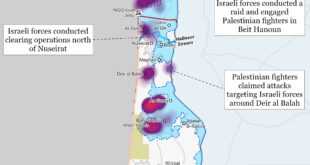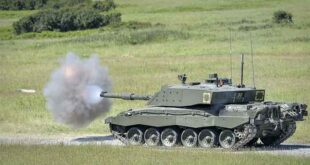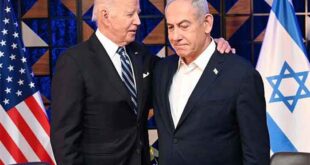Russia proposed a new security treaty between Washington and Moscow on December 17th.
The Kremlin contends it will de-escalate tensions surrounding Ukraine, if the U.S. agrees to the terms of the “Treaty between the United States of America and the Russian Federation on Security Guarantees”. An examination of the draft treaty furnishes the exact opposite conclusion. The proposed treaty decreases tension between the U.S., NATO, and Russia over Ukraine for the short-term; the agreement creates conditions allowing Moscow to re-establish a neo-Soviet type security climate in the years following the accord’s enactment.
An analysis of the Treaty’s Articles 1-8 elaborates on the above conclusions.
Article 1
“The Parties…..shall not undertake actions nor participate in or support activities that affect the security of the other Party; shall not implement security measures adopted by each Party individually or in the framework of an international organization, military alliance or coalition that could undermine core security interests of the other Party.’
Putin views NATO membership for any of the countries along Moscow’s periphery as a “undermining [Russia’s] core interests” – regardless of the stipulations membership within NATO carries. Moscow realizes it cannot reverse NATO membership for the Baltic states. It can frustrate, if not prolong perhaps indefinitely, membership aspirations for Ukraine and other countries along its border (Georgia most notably).
The text includes the words “activities” and “measures” since both are vague and ambiguous. Russia is involved in different covert “activities” that can undermine the “security of the other Party”. These activities most likely include disinformation and different disruptive cyber pursuits. The same approach is applicable for the word “measures”. The U.S. and its NATO members are not engaged in any related “activities” or “measures” that threaten Russia’s security, except in a retaliatory capacity. The Kremlin understands the nature of NATO’s military pursuits. Article 1 is a cover for Russian “activities” and “measures” designed to “undermine core security interests” of NATO and the United States, while buttressing the Kremlin’s strategic objectives.
Article 2
The Parties shall seek to ensure that all international organizations, military alliances and coalitions in which at least one of the Parties is taking part adhere to the principles contained in the Charter of the United Nations.
Article 2 is directed at Ukraine. Several related components of the U.N. Charter are vaguely worded. Those same elements can be viewed differently for various purposes according to the interpreting party. It is aimed at Kiev via Washington by Moscow. Its purpose is to manipulate Ukraine into accepting, adopting, and/or pursuing policies favorable to Moscow, yet are not necessarily in Kiev’s interests
Article 3
The Parties shall not use the territories of other States with a view to preparing or carrying out an armed attack against the other Party or other actions affecting core security interests of the other Party.
The article is issued with Ukraine in mind. The Kremlin’s frame of reference is World War Two. Putin and Russia’s foreign policy planners are afraid the U.S. and NATO will use Ukraine as an entry-point for an attack against Russia as Germany pursued in 1941. Moscow fails to consider Washington and Brussels’ military activities are defensive in purpose. America’s military activities are designed to train, enhance and augment Ukraine’s military forces. The United States and NATO finally lack the resources for an invasion of Russia – an invasion which is unrealistic for various strategic and material reasons.
Article 4
The United States of America shall undertake to prevent further eastward expansion of the North Atlantic Treaty
Organization and deny accession to the Alliance to the States of the former Union of Soviet Socialist Republics.
The United States of America shall not establish military bases in the territory of the States of the former Union of Soviet Socialist Republics that are not members of the North Atlantic Treaty Organization, use their infrastructure for any military activities or develop bilateral military cooperation with them.
Article 4 is directed at deliberations focusing on Ukrainian membership in NATO. Russia is concerned the Ukraine’s MAP will be expanded to allow Kiev to become a full alliance member – a membership Russia is worried will be used to deploy NATO troops, aircraft, and other military forces on Ukraine’s territory. It’s a scenario which occurred in Estonia and Latvia. NATO’s forces in the Baltic States probably irk Russia’s defense planners and foreign policymakers. The Kremlin seeks to prevent a similar event from happening with Ukraine. Article 4 is intended to prevent the previously mentioned scenario.
Article 5
The Parties shall refrain from deploying their armed forces and armaments, including in the framework of international organizations, military alliances or coalitions, in the areas where such deployment could be perceived by the other Party as a threat to its national security, with the exception of such deployment within the national territories of the Parties.
The Parties shall refrain from flying heavy bombers equipped for nuclear or non-nuclear armaments or deploying surface warships of any type, including in the framework of international organizations, military alliances or coalitions, in the areas outside national airspace and national territorial waters respectively, from where they can attack targets in the territory of the other Party.
Article 5 is a Russian effort to thwart Washington from stationing, deploying, or using Kiev for any military purpose. Moscow views any U.S./NATO military presence on Ukrainian soil as a threat – even if for training the Ukrainian military. Russia sees even the smallest of military activities as a potential prelude for larger operations.
Article 6
The Parties shall undertake not to deploy ground-launched intermediate-range and shorter-range missiles outside their national territories, as well as in the areas of their national territories, from which such weapons can attack targets in the national territory of the other Party.
Article 7
The Parties shall refrain from deploying nuclear weapons outside their national territories and return such weapons already deployed outside their national territories at the time of the entry into force of the Treaty to their national territories. The Parties shall eliminate all existing infrastructure for deployment of nuclear weapons outside their national territories. .The Parties shall not train military and civilian personnel from non-nuclear countries to use nuclear weapons.
Articles 6 and 7 are designed to allay the Kremlin’s fears that Washington will use Ukraine as a staging area for the above munitions. It is also concerned the United States will deploy those munitions to Ukraine as a means of striking different Russian targets.
Article 8
The Treaty shall enter into force from the date of receipt of the last written notification on the completion by the Parties of their domestic procedures necessary for its entry into force.
Article 8 is a Kremlin effort to receive official sanctioning for “activities” and “measures” designed to influence American public opinion to pressure policymakers into ratifying the Treaty. Russia attempted to utilize those same approaches to influence the outcomes of the 2016 and 2020 U.S. elections. Moscow will likely use similar tactics of deception, deceit, mis-and- disinformation to impact the ratification process. Article 8 is inserted with this objective in mind.
The “Treaty between the United States of America and the Russian Federation on Security Guarantees” in conclusion is a Kremlin effort to prevent Ukraine from joining NATO. The Accord seeks to serve as a precedent for other countries along Russia’s periphery from pursuing similar objectives relating to NATO – most notably Georgia. The Kremlin is basing its policies on historical precedent. Russia is concerned Ukraine will become a staging area for a potential NATO invasion, if Kiev becomes an alliance member. It’s an outdated thinking. The organization lacks the wherewithal, military resources, operational capability, or interest in pursuing the endeavor. The Treaty is also arguably a Kremlin attempt to pursue a reinvigoration of a Soviet style type entity – a reinvigoration Washington, Brussels, and other FSU states oppose.
 Eurasia Press & News
Eurasia Press & News




